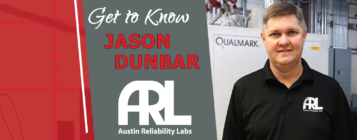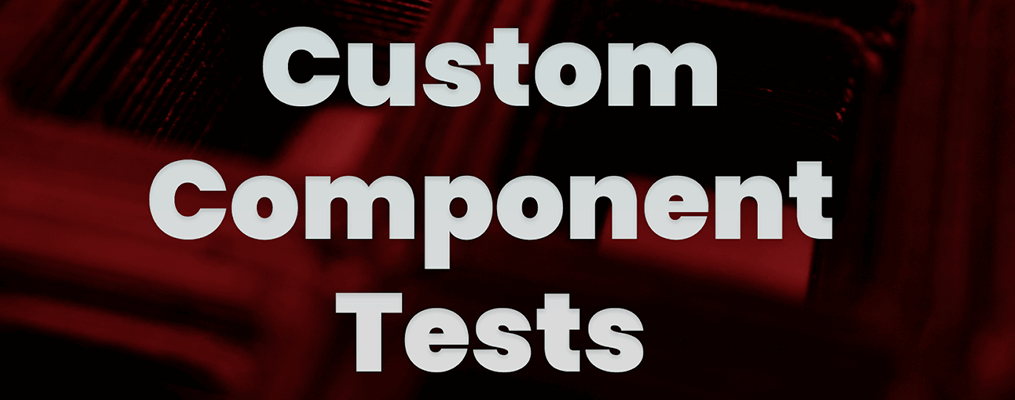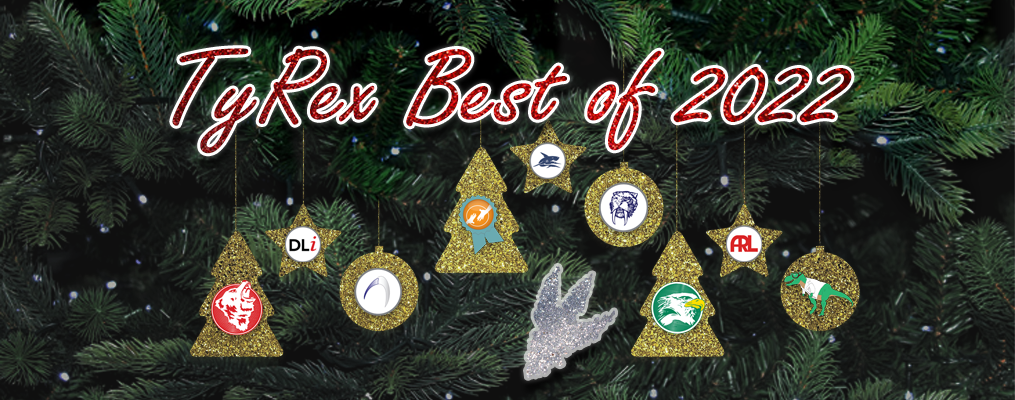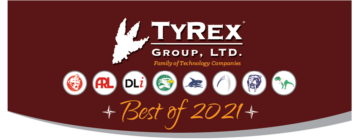Interview with Tom Sneath
Amit Pal2023-05-12T09:23:55-05:00Recently ARL added Tom Sneath, a new reliability test manager, to its staff. We sat down with Tom to get to know him better. Tom, welcome to the TyRex Technology Family.
Tom, welcome to the TyRex Technology Family. We’d like to get to know you a little, so first, where’d you grow up? How long have you been in Austin, and where’d you go to school?
Tom: I was born in Detroit, then moved to Southern California around 1980. I basically grew up there. I went to school in Long Beach, California. I stayed out there until 2003, when I moved to Washington for about six years and I’ve been in Austin for two years or shorter.
You’ve worked at some cool places before here. What’s your previous experience?
Tom: My first real lab job was for a company called HydraFlow in Fullerton, California. They’re a small aircraft parts manufacturing business. The founder launched his company out of his garage because he got tired of working for big companies – he learned how to make hoses, fittings, and things like that with used industrial equipment. By the time I met him, he was 82 years old and had a pretty successful company.
He met me when I was an auto mechanic and said, “Hey, if you want a real job, you can come work for me.” I did that for 10 years, working in product development. Then I moved to a valve actuator company. I went to work for the space products division, where I was building and testing valves for satellites and nuclear missile components, of all things. That paved the way for me to move into the new space industry – I followed a couple of guys that I worked with on some NASA projects to SpaceX where I worked for a little shy of four years, running the components, assembly, and test area. These were flight components – anything from valves and actuators to anything that needed to be assembled in a clean room – cryogenic valves, fuel valves to solar array actuators, solar array dampers, flight and stage separation pushers, things of that nature.
And then it was off to Blue Origin in Seattle. I spent about six years there. I was a primary fluid systems integration engineer and I started getting into doing testing as a function of that. Eventually, that responsibility grew into an entire department of vibration. I moved over there and they created a new group and I integrated in with that group. I basically spent the last year and a half doing full time environmental testing.
“With testing, I got the opportunity to use my mechanical skills and my natural tinkering and problem-solving skills in ways that I would not have been able to as a car mechanic.”
Were there other interests or circumstances that drew you to reliability testing?
Tom: I was a car mechanic. So you look back that was about 1998, I was 24 years old and I was working in an automotive shop. It was fun, but I wanted to build hot rods and race cars and not do brake jobs on Hondas and Toyotas all day long. It was fun as a hobby, but as a real job, it was like, alright, this is really hard work and I’m not getting that much out of it. With testing, I got the opportunity to use my mechanical skills and my natural tinkering and problem-solving skills in ways that I would not have been able to as a car mechanic. You’re given a product and they say, “Hey, we want you to test it this way.” You have to figure out how to fixture it and put it in place. That was a really strong building block, going from reading how to take something apart and put it back together out of a book and use a diagnostic based on only a small set of price parameters to really being able to dig into that unknown and try to add a realistic outcome to something in a simulated environment.
In addition to your work on valves and actuators, then moving into more specialized vibe testing, do you have any other specialties or areas of focus?
Tom: My background is very heavily based in fluids testing – valves, actuators, cryogenic testing, nitrogen, liquid oxygen and those systems. A lot of pressure testing, pneumatic and hydrostatic pressure testing. But I’ve done a fair amount of just about everything. During my last stint at Firefly, I was the lead of the Test Operations Managers – a hands-on manager of all the test technicians who set up all the testing of the test site – primarily motion testing, engine testing and integrated staged testing. In that position, I used a lot of my fluid systems knowledge because I was building systems from scratch – they weren’t really developed yet at the time. A lot of problem-solving opportunities. And that’s direct work with the engineer all the way up to the CEO. In a small company, everybody’s working in the same pit.
“…the moment I walked in the door here, I felt extremely comfortable. Everybody here is friendly. Everybody here is interested to know who everybody here is.”
As you come on board here at ARL, is there anything that particularly excites you with the prospect of working here?
Tom: The prospect of being able to do a wide range of environmental testing, which is what I am interested in. After speaking to Andrew (ed. note: ARL’s CEO) and seeing how the company operates, it reminded me a lot of working in my first lab job at HydraFlow, which was a small family-owned company with a vast array of products – I really liked the dynamic of the family of companies and also the way that the company itself was geared towards relationships. And the moment I walked in the door here, I felt extremely comfortable. Everybody here is friendly. Everybody here is interested to know who everybody here is. You know, it’s very welcoming.
As far as the actual work goes, I’ve been able to dive right in with what experience I have, and everybody’s been helpful. They’ve stepped in and helped me fill in the gaps. I’m trying to apply the best that I can to try to bring new things and get up to speed on some of the things that are standard operations. So far, it’s been a really good start.
Are there areas that you’re looking forward to expanding at ARL?
Tom: We’d like to focus more on expanding some of the cryogenic testing capabilities, maybe some of the pressurized system capabilities, working systems tested. Some of those might be military space applications. Because I have worked for most of the major new space companies, I have long standing relationships with a lot of different engineers too. I think that may be something that is helpful and in fostering a relationship between us and other companies that are coming here for work. There may be things that they might want that we’re not quite capable of yet, but building on that relationship could be a partnership for us to expand our capabilities.
Is there anything you wish the average person knew about reliability testing, about this specific industry or mode of business?
Tom: I think the one thing that surprises a lot of people – and this comes from a long history of working on development products with engineers directly – is that you cannot model or stress analyze everything to the point where you can eliminate the random nature of reality. Simply rephrased – no matter how well you analyze it, and what kind of data you extract, when the rubber meets the road, putting the actual product to test can always surprise you.
That makes sense, but I would want to think all your tests will solve every unknown.
Tom: Right? Well, some things go very much as expected. Some things just boggle the mind. Some things, especially when doing stress testing, break.
Last question. You find yourself on a desert island and you’re going to Robinson Crusoe your way off. What’s the one piece of reliability testing equipment you’d bring along?
Tom: Probably a propane torch. You can burn things, you can light a fire with it. I would say machete if it was something I use in the lab, but … fire solves all. It is the number one key to survival.





